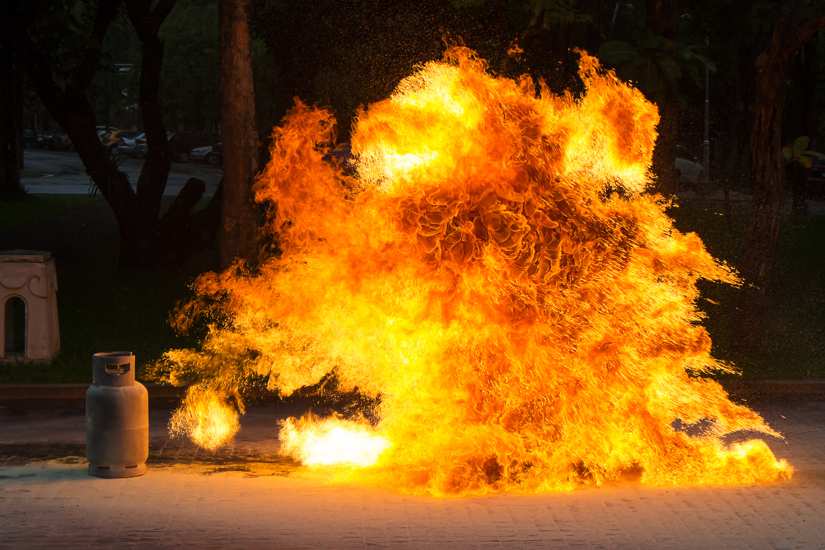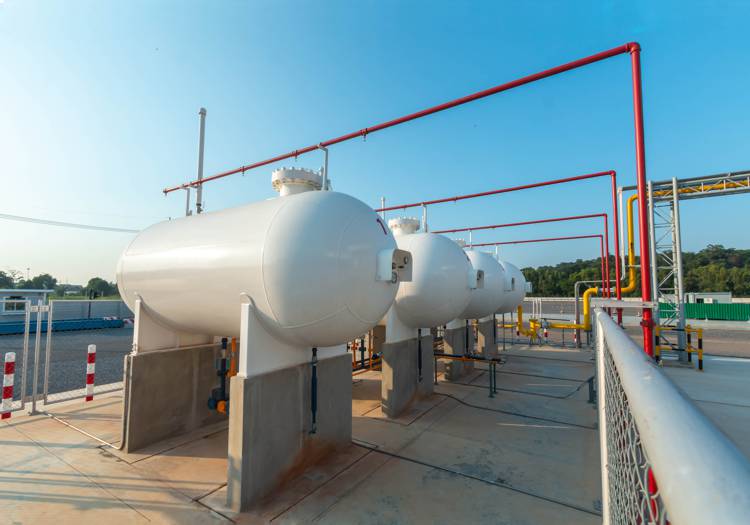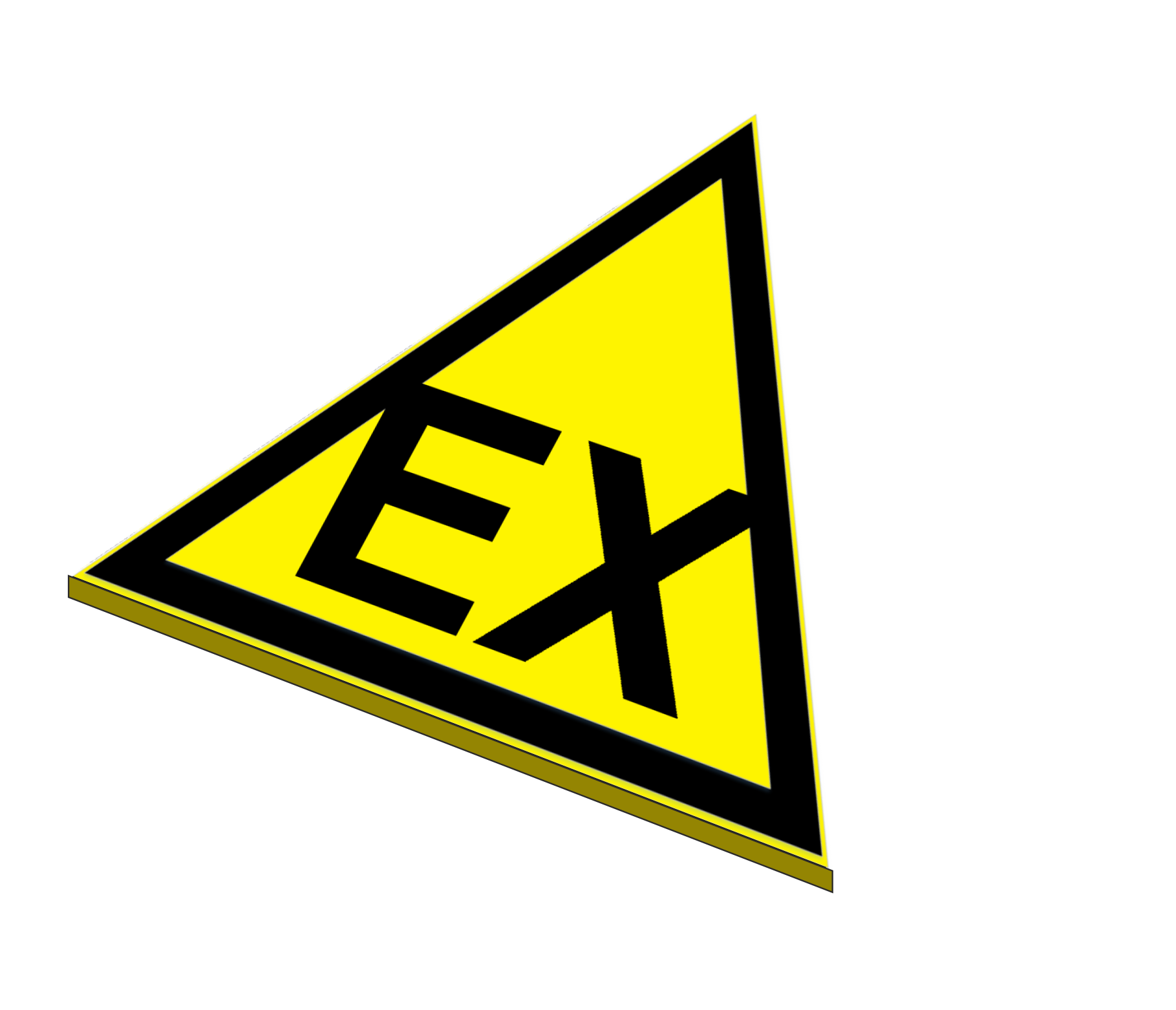
Flammable gases, and vapour or mist from flammable liquids, can give rise to explosive atmospheres in air (or oxygen or, indeed, any oxidizing gas). Explosive atmospheres arise when there is a sufficient concentration of fuel dispersed in air (oxidant) to support flame propagation. An ignition source of sufficient energy and temperature is required to initiate the combustion process in an explosive atmosphere, but once ignited, flame will rapidly progress through the entire flammable volume.
Explosive atmospheres require that the concentration of fuel exceeds a minimum threshold value (the lower explosive limit; LEL) but does not exceed a maximum threshold limit (the upper explosive limit; UEL). In addition the concentration of oxidant in the mixture (whether oxygen or another oxidizing gas) must exceed a minimum concentration in order for flame propagation to be possible.
Flammable gases, vapours or mists can support different types of explosion depending on the environment surrounding the explosive atmosphere :
Volume Explosions – ignition of an explosive atmosphere within a confined volume (e.g. a room, a process vessel or another type of enclosure) will normally result in a flame travelling at sub-sonic velocity through the explosive atmosphere (a deflagration). Heat from the combustion causes the gases to expand, creating pressure within the confines of the enclosure. If the explosive atmosphere is large enough the pressure will rapidly build to a level capable of causing the enclosure to fail, resulting in a sudden release of energy and flame (an explosion).
Ignition of an explosive atmosphere within most process vessels will result in a sub-sonic deflagration, with the maximum overpressure restricted to around 7 barg (100 psig) (depending on the heat of combustion of the fuel and the concentration of the fuel in the explosive atmosphere). However ignition of an explosive atmosphere in a pipe or duct can result in rapid flame acceleration, with the potential for a transition from sub-sonic to sonic flame speed – giving rise to a detonation (creation of a shock wave). The consequences of detonation will be more serious than those of a deflagration.
A further feature of volume explosions where an explosive atmosphere extends between interconnected vessels – pressure created by ignition in an upstream vessel will pre-pressurise the explosive atmosphere in downstream vessels resulting in higher overpressures in the downstream vessels when the flame arrives.
Explosive atmospheres for volume explosions may arise due to

where an explosive atmosphere arises in an open environment (e.g. outdoors or in a very large building) ignition will normally result in a sub-sonic deflagration with minimal overpressure effects – i.e. a Flash Fire. However, where an explosive atmosphere arises in an enclosure containing a high density of obstacles (e.g. process equipment), and especially where there are regular arrays of small scale items of equipment (e.g. banks of pipework) or if a very large explosive atmosphere involving a highly reactive fuel arises in a congested area outdoors (again especially where there are arrays of regularly spaced small obstacles), turbulence may result in rapid acceleration of the flame resulting in a transition from deflagration to detonation and creation of a blast wave. The explosion involving cyclohexane at Flixborough in 1974 was the first authenticated example of this phenomenon.
The potential for Vapour Cloud Explosions (VCEs) is limited to gases with high flame speeds (reactive gases).
BLEVE– a further type of explosion that may arise in process industries is the so called Boiling Liquid Expanding Vapour Explosion or BLEVE. This can arise when a vessel containing a flammable liquid is heated by a fire, resulting in the contents of the vessel boiling and in so doing generating abnormally high pressure within the vessel. Heat from the surrounding fire will weaken the structure of the vessel resulting in failure (rupture) of the vessel at an internal pressure below the design pressure. The sudden failure of the vessel results in boiling liquid being released from a pressurized environment, causing a large fraction of it to immediately vapourise. The expanding vapour will be ignited by the fire surrounding the vessel resulting in :
Flammable gases, vapours or mists can support different types of explosion depending on the environment surrounding the explosive atmosphere :
BLEVE hazards are most commonly associated with Liquefied Petroleum Gas (LPG) storage facilities and road / rail tankers.

It is essential for the Health and Safety of personnel at installations where flammable gases and liquids are stored and processed that potential explosion hazards are rigorously identified and thoroughly understood. There are legal requirements under DSEAR (in the UK) and the Atex 137 Directive (in the EU) requiring that suitable and sufficient risk assessments are undertaken to ensure that the risk to personnel from the hazards of explosive atmospheres (including dust explosions) is as low as reasonably practicable.
Furthermore there is a legal requirement to assess risk from potential explosion hazards at major accident hazard sites under the auspices of the Control of Major Accident Hazards Regulations (COMAH) in the UK and the Seveso Directive in the EU.
Conduct of an effective risk assessment requires an in-depth understanding of the conditions under which explosions may arise, and an appreciation of the potential consequences of these events. In particular the risk assessment needs to identify the hazard scenarios that may result in harm to people, and ensure that suitable control measures are implemented into the plant design to minimize the risk from these hazards.
Having identified those hazards with the potential to cause harm the assessment should follow a hierarchical approach in respect of prevention and protection e.g. :
“Minimisation” may involve the use of “inerting” (i.e. displacement of oxygen by use of inert gas) however this may introduce additional hazards of asphyxiation. Nevertheless this approach is not uncommon for facilities involving the storage and processing of flammable liquids. Where inerting is employed it is usually critical to continuously monitor the oxygen concentration in the vessels concerned so as to ensure that safe operation is being reliably maintained.
Our consultants have in depth knowledge of explosion phenomena for explosion hazards involving flammable gases and liquids (including hazards from mists and BLEVE). They can provide expert analysis of potential hazards to provide a detailed understanding of how the hazards may arise, the potential consequences (e.g. in terms of overpressure, flame / heat, and projectiles) and expert guidance on appropriate prevention and protection measures.
Our assessments follow a systematic approach involving :

The consideration of the process to understand how, where and why flammable atmospheres involving flammable gases or vapours may occur would follow the guidance from BS EN IEC 60079 relating to Area Classification, thereby fulfilling the requirements of DSEAR or Atex Directive 137 (as appropriate) for preparation of a Hazardous Area Classification study for the operations. READ MORE
The Basis of Safety will involve Prevention and / or Protection measures to ensure that the overall explosion risk is suitably controlled. In some instances the Basis of Safety will relied solely on preventive measures, providing reliable controls to avoid the generation of a flammable atmosphere coincident with the presence of an effective ignition source. However, in making a decision on whether preventive measures alone will be sufficient the assessment must also consider the potential consequences of the explosion event (i.e. if the preventive measures were to fail) and, depending on the severity of these, it may also be necessary to utilize protective measures in the plant design.
Where preventive measures may not be totally reliable and where consequences of the explosion event could be serious, protective measures will be needed.
As a deliverable from the assessment our consultant will provide a functional specification for equipment and protective systems required to implement the Basis of Safety. In relation to this our consultants are able to provide independent / impartial advice given that Phoenix does not supply hardware, and does not act as an agent for any equipment supplier.
Flammability data sufficient to allow an effective assessment are normally available from Material Safety Data sheets for the flammable materials concerned, or otherwise should be obtainable from published literature. Phoenix have also collated a database of flammability data for the most commonly used industrial flammable gases and liquids.
Data most relevant to assessment of explosion hazards involving gases, vapour and mists are flammability limits, Flash point, autoignition temperature and minimum ignition energy.
Our overall aim is to provide practical, pragmatic advice to ensure acceptable levels of explosion safety with protection commensurate to the risk.